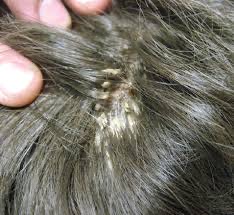A healthy scalp is the foundation for luscious, vibrant hair. However, various factors can disrupt this delicate balance, leading to a range of scalp conditions that affect not only the appearance but also the health of your hair. Understanding the underlying causes of these conditions is crucial for effective treatment and prevention. In this article, we’ll delve into the diverse factors that contribute to hair and scalp conditions, empowering you with knowledge to nurture your scalp and hair health.
Hair and scalp conditions can be caused by various factors, including:
1. Genetics: Some scalp condition, such as pattern baldness and certain types of alopecia, have a genetic component and tend to run in families.

2. Hormonal Changes: Hormonal fluctuations, such as those that occur during puberty, pregnancy, menopause, or thyroid disorders, can affect the health of the scalp and hair follicles.
3. Poor Hair Care Practices: Overuse of heat styling tools, harsh chemical treatments (such as perms or relaxers), frequent hair coloring, and improper washing or brushing techniques can damage the scalp and hair, leading to conditions like dryness, dandruff, and breakage.
4. Stress: Chronic stress can disrupt the body’s hormone levels and immune function, which may contribute to scalp condition such as psoriasis, seborrheic dermatitis, and alopecia areata.
5. Infections: Bacterial or fungal infections of the scalp, such as folliculitis or ringworm (tinea capitis), can cause redness, itching, and inflammation.
6. Autoimmune Disorders: Conditions such as psoriasis and alopecia areata are autoimmune disorders in which the body’s immune system mistakenly attacks healthy cells, including those in the scalp and hair follicles.
7. Nutritional Deficiencies: Inadequate intake of essential nutrients, such as vitamins A, D, E, and B vitamins, as well as minerals like iron and zinc, can affect the health of the scalp and hair, leading to conditions such as dryness, brittleness, and hair loss.
8. Allergies: Allergic reactions to certain hair care products, cosmetics, or environmental factors (such as pollen or pet dander) can cause scalp irritation, itching, and inflammation.
9. Medical Conditions:
Underlying medical conditions such as eczema, lupus, and diabetes can affect the scalp and hair follicles, leading to various scalp conditions.
10. Medications:
Certain medications, including chemotherapy drugs, antidepressants, and blood thinners, can cause hair loss or scalp irritation as side effects.
It’s essential to consult with a healthcare professional or dermatologist to determine the underlying cause of any scalp condition and to develop an appropriate treatment plan.
Pingback: Guide to Treating Hair Dandruff - SimplExplainer